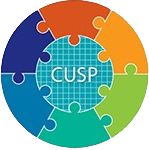Toolkit for Improving Perinatal Safety
AHRQ Safety Program for Perinatal Care

The Agency for Healthcare Research and Quality (AHRQ) developed the Safety Program for Perinatal Care (SPPC) in order to improve the patient safety culture of labor and delivery (L&D) units and decrease maternal and neonatal adverse events resulting from poor communication and system failures. The SPPC is organized around three program pillars, which include: Teamwork and Communication skills, Perinatal Safety Strategies, and In Situ Simulation training. This toolkit was developed to support implementation of the three program pillars. The toolkit helps L&D units improve patient safety, team communication, and quality of care for mothers and their newborns. It builds on knowledge gained from AHRQ's Comprehensive Unit-based Safety Program (CUSP) and the TeamSTEPPS® teamwork system, and from findings from AHRQ's patient safety and medical liability initiative demonstration grants. The tools can be customized to local unit processes and procedures.
How To Use the Toolkit for Improving Perinatal Safety
The Toolkit is organized around three pillars—Teamwork and Communication for Perinatal Safety, Perinatal Safety Strategies, and In Situ Simulations—that an L&D unit can use to teach team members how to apply CUSP to prevent obstetrical adverse events. Use of this toolkit can create or enhance a culture of patient safety to significantly reduce preventable errors.
Toolkit Pillars
Each pillar contains a PowerPoint slide set, accompanying facilitator guide, and supporting CUSP tools to support change at the unit level.
Success Stories of Five Labor and Delivery Units Using the Toolkit
"AHRQ Safety Program for Perinatal Care: Experiences From the Frontline" describes the implementation experiences of five L&D units that successfully implemented the program.
About the Toolkit Development
The toolkit was developed as part of a national implementation project to improve patient safety in L&D units. The five-year project brought together subject matter experts and participating hospitals across the country.
- Background
- Project Partners
- Reports (Resources)
Related Resources
AHRQ developed and tested the Toolkit for Improving Perinatal Safety in response to a call from the field. The toolkit provides training related to three pillars—use of perinatal safety bundles, emphasis on teamwork and communication, and establishing in-situ simulation—that combined have shown improvements on certain perinatal safety outcomes. More recent information on some of the perinatal safety bundles is available from the Alliance for Innovation on Maternal Health (AIM) project. AIM, an ongoing effort led by the U.S. Department of Health and Human Services Health Resources Services Administration (HRSA) with multi-organization support, began after AHRQ’s program was developed and is focused on implementing specific clinical bundles.This video can help you think about how to incorporate CUSP principles into your daily work. The specific event presented in the video is postpartum hemorrhage, but the CUSP techniques can be used for any perinatal safety event.
(AIM) project. AIM, an ongoing effort led by the U.S. Department of Health and Human Services Health Resources Services Administration (HRSA) with multi-organization support, began after AHRQ’s program was developed and is focused on implementing specific clinical bundles.This video can help you think about how to incorporate CUSP principles into your daily work. The specific event presented in the video is postpartum hemorrhage, but the CUSP techniques can be used for any perinatal safety event.
Page last reviewed June 2017
Page originally created November 2014
Page originally created November 2014
Internet Citation: Toolkit for Improving Perinatal Safety. Content last reviewed June 2017. Agency for Healthcare Research and Quality, Rockville, MD. http://www.ahrq.gov/professionals/quality-patient-safety/hais/tools/perinatal-care/index.html






















.png)









No hay comentarios:
Publicar un comentario